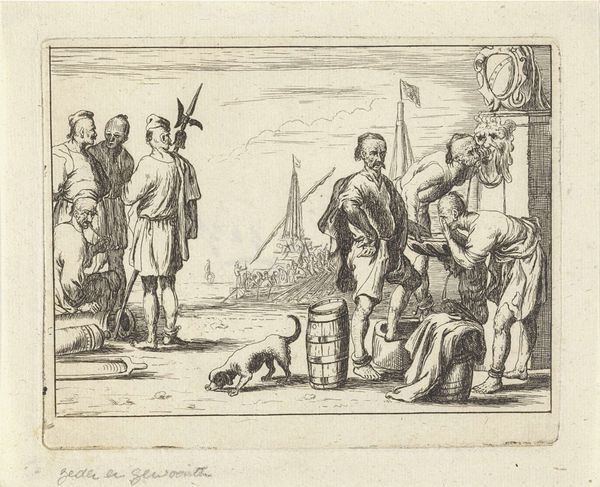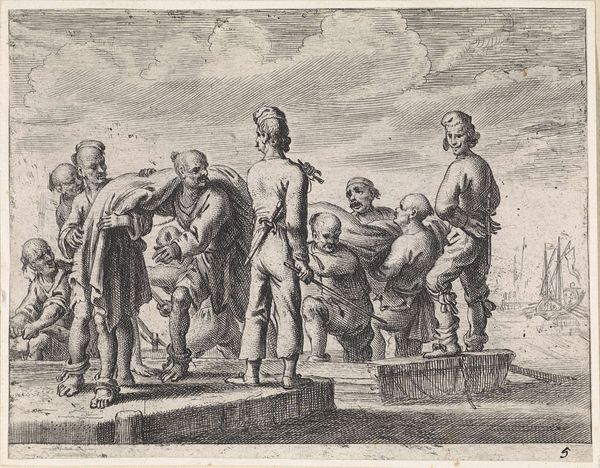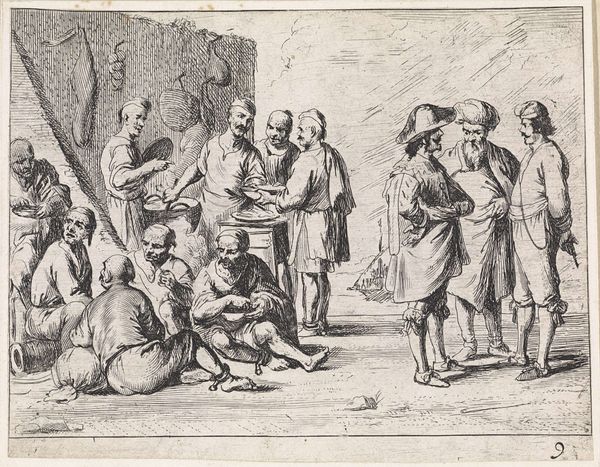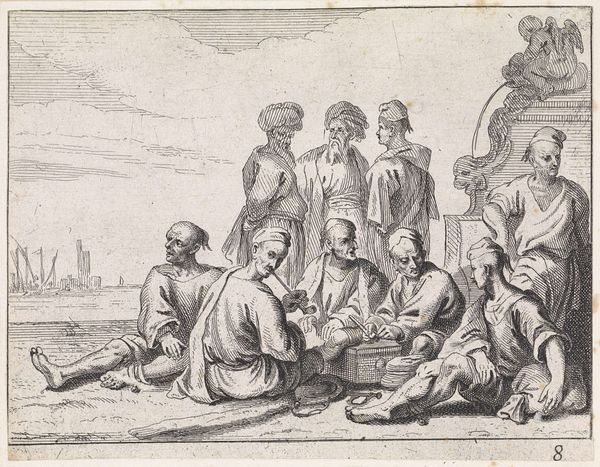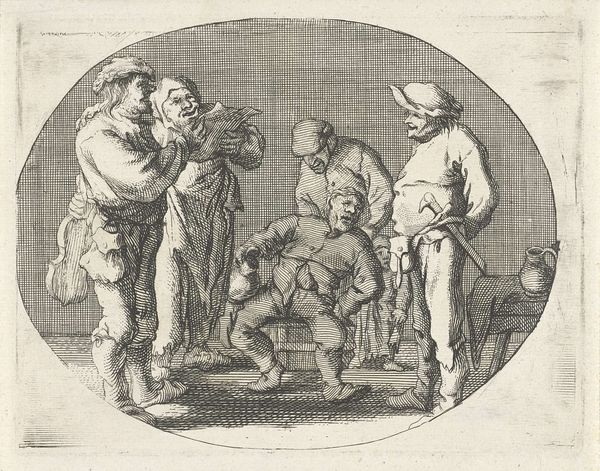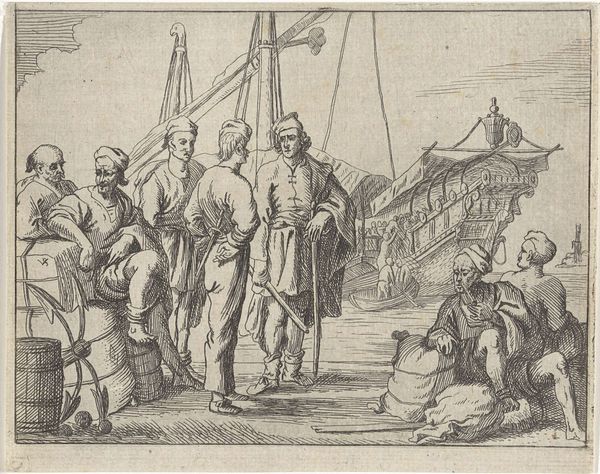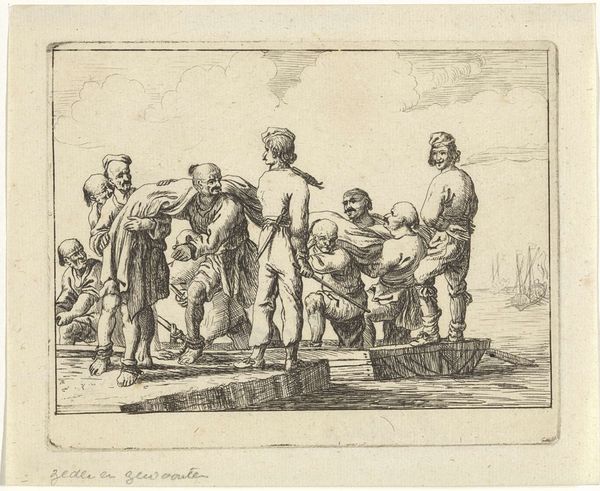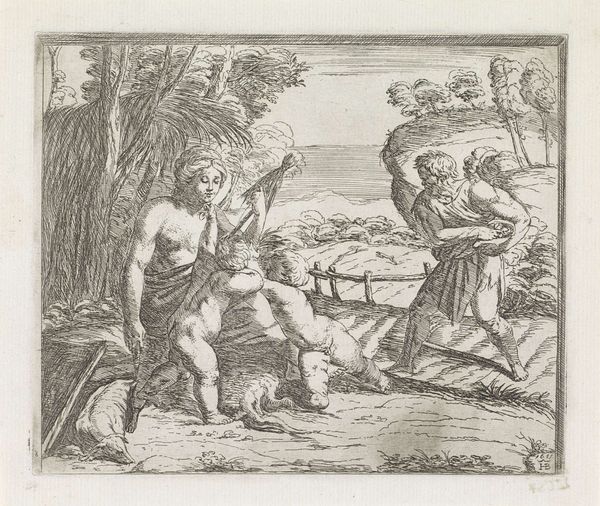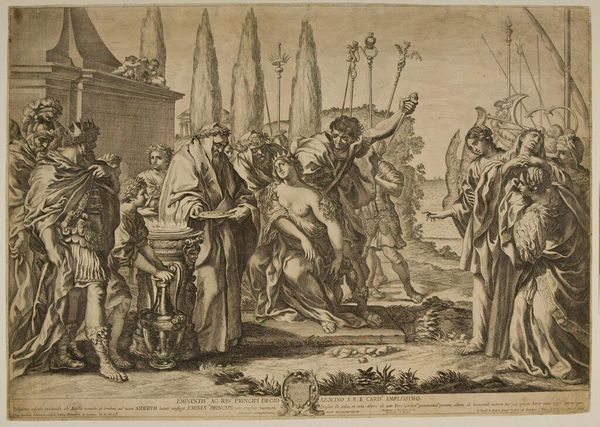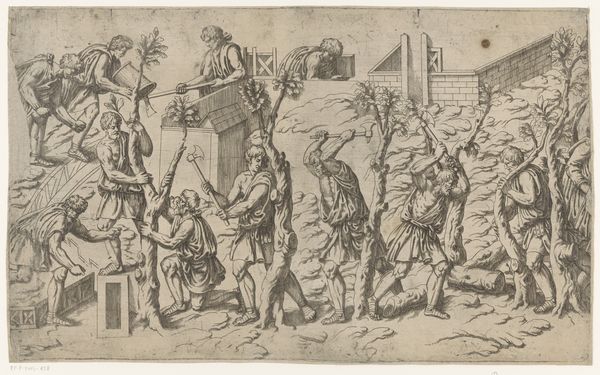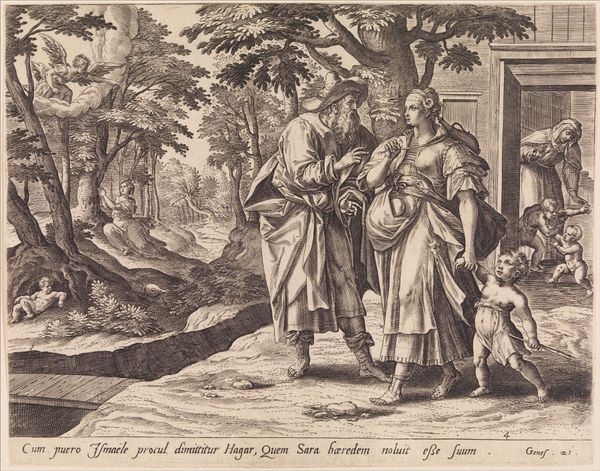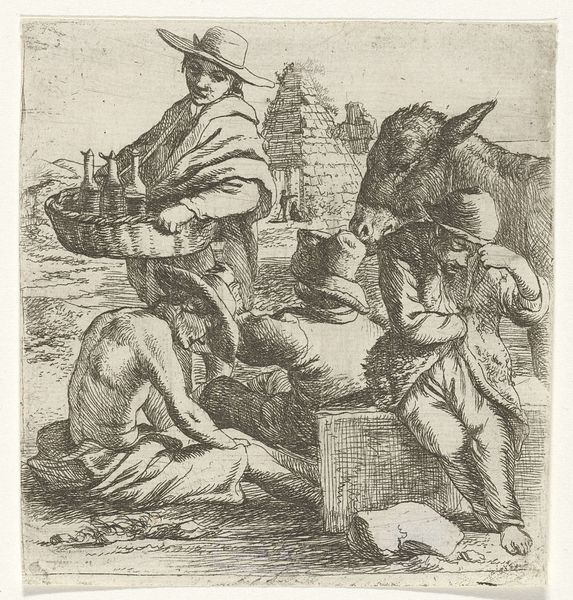
drawing, print, pen, engraving
#
drawing
#
baroque
# print
#
pen sketch
#
pencil sketch
#
dog
#
landscape
#
figuration
#
pen
#
genre-painting
#
engraving
#
realism
Dimensions: height 113 mm, width 147 mm
Copyright: Rijks Museum: Open Domain
Editor: This is Cornelis de Wael’s "Islamic Galley Slaves at a Fountain," made in 1647. It looks like it's an engraving or some kind of print. There’s a definite sense of tension, almost anxiety, in the poses of the figures. How would you interpret this work? Curator: Look closely. The fountain isn't just a fountain; it’s adorned with grotesque masks and a coat of arms, hinting at power and dominion. And the figures around it, are they drinking freely, or are they more like captives drawing from a guarded source? Water, of course, has always been deeply symbolic: life, purification, and here, perhaps, subjugation. What emotions do these juxtapositions evoke for you? Editor: The tension you mentioned is palpable. The juxtaposition of the fountain, a symbol of life, with the weary galley slaves definitely amplifies this. Curator: Indeed. Now consider the galley, visible in the background. A vessel, yes, but also a machine of war and enslavement. De Wael isn't just showing us a scene, he's inviting us to contemplate the moral weight of conquest. Editor: The small details really bring out bigger meanings, and it is thought-provoking to think about the work as a cultural artifact. Curator: Precisely. These aren't simply aesthetic choices; they're charged with the artist’s understanding and the prevailing attitudes toward cultural 'others' during that period. Art is a potent vessel for memory. Editor: It’s fascinating how much symbolism can be packed into one image. It gives the work so much depth. Curator: And raises essential questions, even today.
Comments
No comments
Be the first to comment and join the conversation on the ultimate creative platform.
